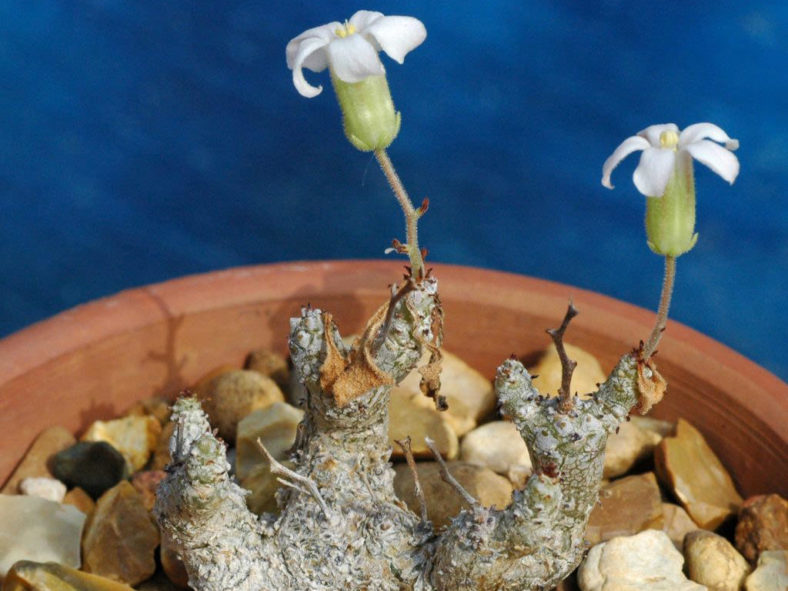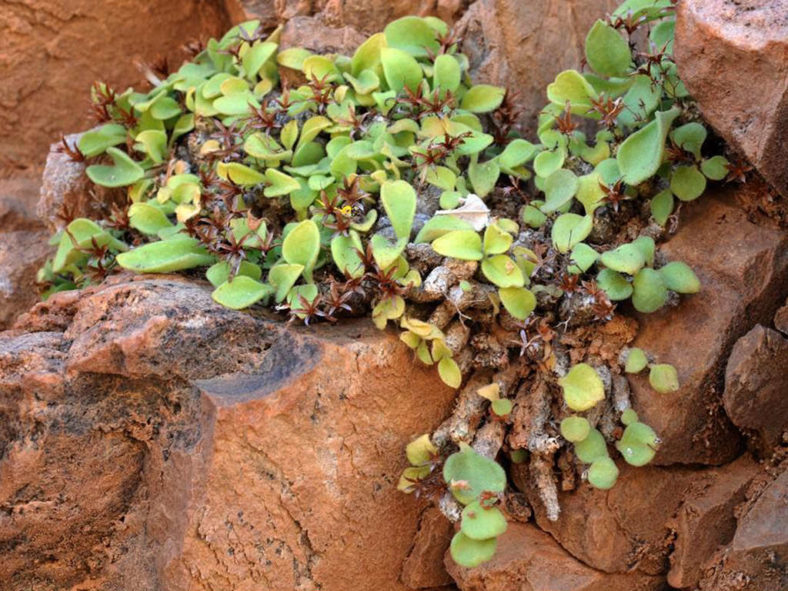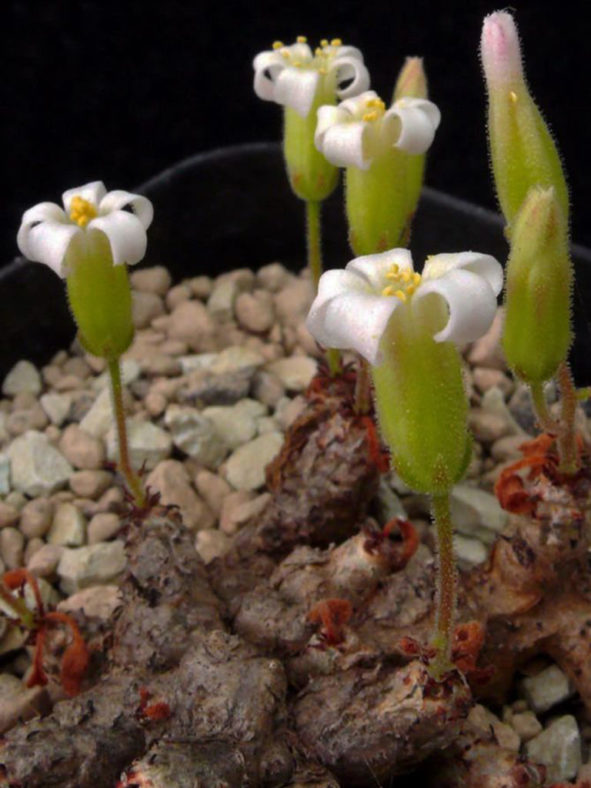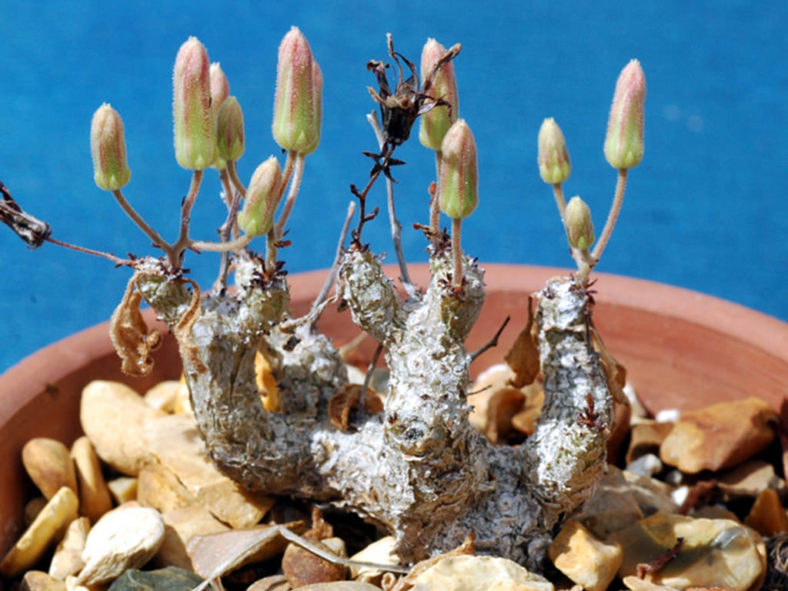Scientific Name
Tylecodon longipes van Jaarsv. & G.Will.
Scientific Classification
Family: Crassulaceae
Subfamily: Kalanchoideae
Genus: Tylecodon
Etymology
The specific epithet "longipes (LON-juh-peez)" means "long-footed, long-legged" and refers to the length of the petiole compared with the blade of the smallest leaves.
Origin
This species is native to South Africa (Northern Cape). It occurs in cracks on quartzite cliffs at elevations between 1,300 and 2,600 feet (400 and 800 m) above sea level.
Description
Tylecodon longipes is a dwarf, highly branched succulent with 1 to 4 leaves per branch. It slowly grows up to 1.2 inches (3 cm) tall and up to 8 inches (20 cm) in diameter, forming dense mats. The branches are short with cracked silver-grey bark, exposing the green tissue. They can reach up to 0.8 inches (2 cm) in diameter. The leaves are green and covered with glandular hairs. They are lance-shaped to spatula-shaped, rarely somewhat channeled, measuring. The leaves are attached to the branch by a petiole up to 1.4 inches (3.5 cm) long and up to 0.8 inches (2 cm) wide. They are dry at flowering.
The flowers are erect, cylindrical to funnel-shaped, green with white petals, and can reach up to 0.6 inches (1.5 cm) in length. They appear on stalks that can grow up to 0.8 inches (2 cm) long in mid-summer.

How to Grow and Care for Tylecodon longipes
Light: This succulent can survive direct sunlight exposure without problems, but it will grow beautifully in partial shade.
Soil: A well-draining soil mix is a key to healthy T. longipes. Poor drainage and overwatering most commonly cause root rot in both indoor and outdoor plants. Indoors, it is essential to use pots with at least one drainage hole at the bottom.
Hardiness: Like all Tylecodons, this succulent is highly tolerant when it comes to high temperatures and also tolerant of cold, frost-free conditions during the winter. T. longipes can withstand temperatures as low as 30 to 50 °F (-1.1 to 10 °C), USDA hardiness zones 10a to 11b.
Watering: As a winter grower, T. longipes requires careful watering during winter and spring. Get the soil wet, and then wait until it is dry before watering again. In summer, reduce watering to once per month.
Fertilizing: Use liquid fertilizer for cacti and other succulents during winter.
Repotting: You do not need to repot this plant often. You can do it when the container becomes too small or shallow.
Propagation: T. longipes can be cultivated either by seed or by cuttings. Sow the seeds in fall and winter. The best time for taking cuttings is the fall.
Learn more at How to Grow and Care for Tylecodon.
Toxicity of Tylecodon longipes
T. longipes is adapted to avoid animal predation being poisonous. Keep it away from children, pets, and livestock.
Links
- Back to genus Tylecodon
- Succupedia: Browse succulents by Scientific Name, Common Name, Genus, Family, USDA Hardiness Zone, Origin, or cacti by Genus
Photo Gallery
Click on a photo to see a larger version.


